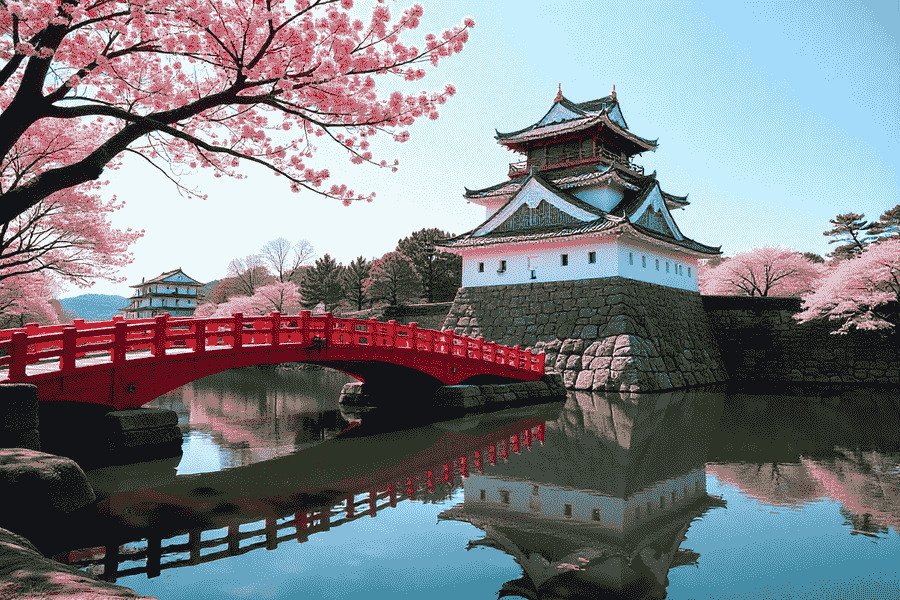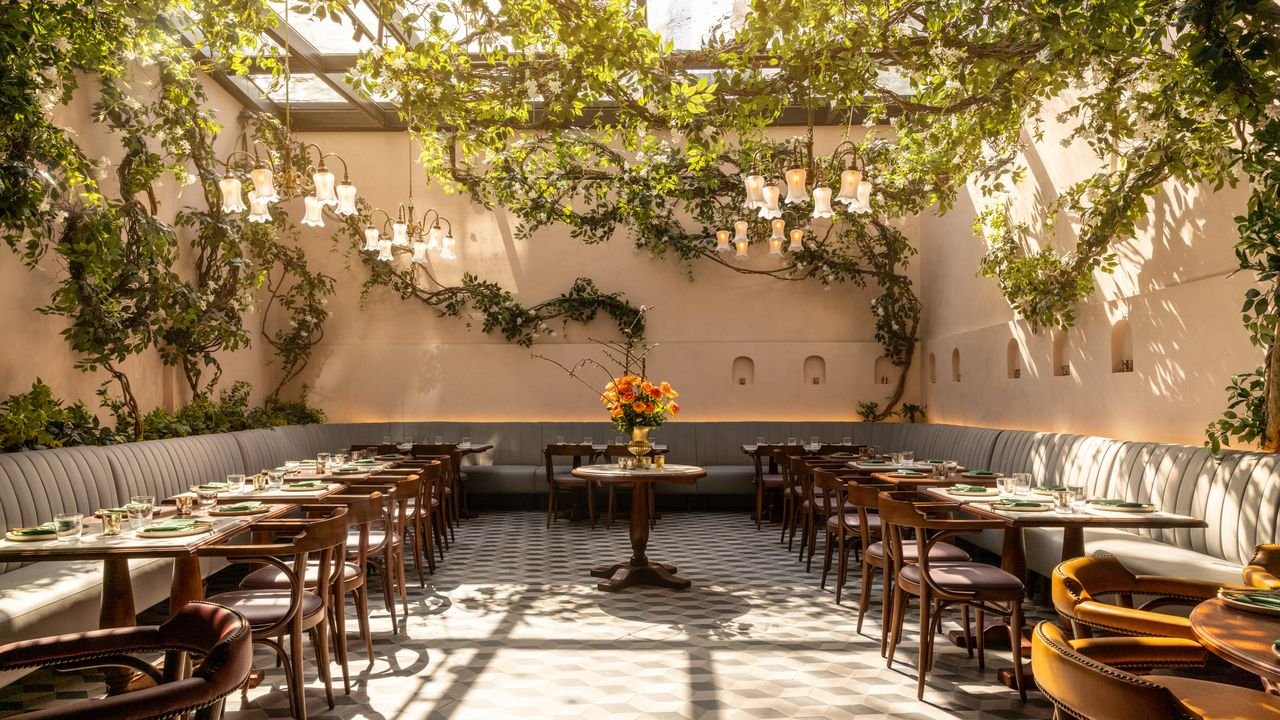Solo Travellers
Japan Awaits Solo Travelers With Open Arms And Reveals Seven Incredible Reasons It Is The Ultimate Destination For Independent Exploration

Saturday, August 2, 2025
Japan stands out as a top destination for solo travelers in 2025, offering unmatched safety, seamless transportation, and a vibrant culture that perfectly suits independent exploration. Whether enjoying the unique nightlife tailored for one, navigating the world-class train system with ease, or immersing yourself in rich cultural experiences, Japan provides everything needed for a fulfilling solo journey. These seven reasons highlight why Japan continues to attract and inspire travelers seeking freedom, adventure, and meaningful connections on their own terms.
Ohitorisama: Celebrating Solo Travel in Japan
In Japan, the word ohitorisama embodies a beautiful concept — it literally means “party for one.” It’s a celebration of enjoying one’s own company, embracing the freedom and joy that come with solo experiences. This mindset resonates deeply with the increasing number of travelers who choose to explore the world independently. Recognizing this global rise in solo and single travel, the Japan National Tourism Organization (JNTO) has highlighted why Japan is a premier destination for solo adventurers. Their insights reveal seven key reasons that make Japan an especially welcoming and enriching place for those journeying alone.
1. Safety That Lets You Explore Freely
Japan’s standing as one of the world’s safest nations is truly earned and continues to be a major draw for those traveling alone. Crime rates are remarkably low, and there’s a strong social emphasis on respect and community. This means solo visitors, regardless of gender or age, often feel comfortable roaming cities, wandering streets, or taking public transit even late into the evening. Whether you’re a first-time solo traveler or a seasoned globetrotter, the peace of mind Japan offers encourages more spontaneous exploration, late-night adventures, and overall confidence when traveling independently.
2. Nightlife Tailored for the Solo Traveler
The standing format encourages mingling but also suits travelers who prefer to enjoy their drinks quietly, soaking up the atmosphere without the pressure of long social interactions.
In addition to tachinomi, Japan has seen a surge in single-person karaoke bars, such as the popular 1Kara chain. These establishments provide private booths where you can sing your heart out without a crowd or an audience. For solo travelers who enjoy music and want to unwind on their own terms, this offers a perfect, low-pressure way to experience a classic Japanese pastime. These options demonstrate how Japan’s nightlife caters to various preferences, especially those who prefer to enjoy social spaces without being part of a larger group.
3. Impeccable Public Transportation
Japan’s train network is famous worldwide for its efficiency, cleanliness, and punctuality. For solo travelers, this is an invaluable asset. Navigating Japan’s extensive railway system is straightforward, even for newcomers. Tools like Google Maps make it easy to find the correct station entrances and train lines, while digital apps such as the Welcome Suica Mobile app (available for iPhone) allow for convenient contactless payments. No need to stress over tricky ticket machines or carrying cash.
The trains themselves are comfortable and safe, enabling travelers to cover long distances quickly or explore cities in detail without hassle. Whether you want to visit the bustling streets of Tokyo, the historic temples of Kyoto, or the scenic coastlines of Hokkaido, Japan’s railways connect you seamlessly. Traveling solo by train encourages independence and flexibility, allowing you to set your own pace and change plans spontaneously.
4. A Wealth of Cultural and Historic Experiences
Japan is a country deeply rich in culture and history, offering endless opportunities for solo travelers to immerse themselves in meaningful activities. From world-renowned art galleries and museums to serene temples and shrines, there is no shortage of places to explore. Solo travelers can take their time, reflect quietly, and soak in the atmosphere without feeling rushed.
Beyond sightseeing, Japan also offers countless hands-on experiences that enrich a traveler’s understanding of traditional arts and crafts. Many workshops cater to individuals eager to learn skills like calligraphy, lacquerware, silk painting, or even sushi-making. These classes are often intimate, welcoming environments where you can meet locals and other travelers alike, yet still enjoy the space to focus on your own creative journey. Many of these cultural activities are affordable or free, making them accessible and perfect for solo adventurers who want meaningful experiences without breaking the bank.
5. Solo-Friendly Accommodations
Japan’s hospitality industry understands the needs of solo travelers well. From capsule hotels designed for privacy and efficiency to traditional ryokans (inns) that offer peaceful retreat experiences, there are plenty of accommodation options that make traveling alone comfortable and enjoyable.
Capsule hotels, which are compact and affordable, provide a safe and convenient stay for solo travelers, often including communal areas where you can socialize if you choose. Meanwhile, ryokans deliver a more traditional Japanese lodging experience with tatami mats, communal baths, and exquisite local cuisine, ideal for travelers seeking quiet reflection and cultural immersion. These accommodation choices reflect Japan’s balance of privacy and community, catering beautifully to solo travelers’ preferences.
6. Culinary Adventures for One
Japan’s food culture is another highlight for those traveling alone. Many restaurants, especially ramen shops, sushi counters, and small izakayas (Japanese pubs), cater comfortably to solo diners. Counter seating and communal tables are common, enabling travelers to enjoy freshly prepared meals without feeling out of place.
The country’s diverse regional cuisines offer endless opportunities to taste local specialties, from Hokkaido’s seafood to Osaka’s street food delights. Eating solo also means you can indulge in exactly what you want, at your own pace, whether it’s savoring multiple small dishes or sticking to your favorite comfort food.
7. The Freedom to Create Your Own Journey
Perhaps the greatest advantage of solo travel in Japan is the freedom to design your own itinerary without compromise. Want to spend hours at a temple garden? Take a spontaneous detour to a small town? Try every vending machine snack you encounter? Solo travel allows for total flexibility, and Japan’s safety, accessibility, and rich cultural fabric make it a perfect backdrop for such personal adventures.
Japan offers solo travelers unmatched safety, convenience, and rich cultural experiences, making it an ideal destination for independent exploration in 2025. Here are seven reasons that make traveling alone in Japan truly special.
The ohitorisama spirit embodies this joy of solitude, transforming travel into a celebration of self-discovery and independent exploration. Whether it’s a short weekend getaway or an extended journey, Japan warmly welcomes solo travelers, offering countless opportunities to connect with its culture, people, and landscapes on your own terms.
Solo Travellers
A “Gilded Age” Guide to New York and Newport

Watching this season of The Gilded Age and want to live for a moment within that show’s world? It’s not difficult to understand your desire. During the late-19th-century period depicted, New York City and Newport alike were grand, blank canvases upon which the wealthy were able to erect massive and splendiferous testaments to their liquidity. It wasn’t all roses, by any means—the wives approached the Newport summer season with more rigor than their husbands had for business dealings, and divorcées like poor Aurora Fane were socially destitute despite no wrongdoing on their part. (Which is why it’s more fun to visit today.)
Below, we’ve rounded up the best hotels in both New York City and Newport to get your Bertha Russell on and steep in the period’s left-behind grandeur, plus some of the places you’d do well to visit during your sojourn to go even deeper.
New York City
Where to stay
The best things to do
Quite a few Gilded Age mansions remain on Fifth Avenue, which once bore the mantle of Millionaire’s Row (Billionaire’s Row along 57th Street is an equivalent for our times, and not nearly as attractive). Quite a few of these are open to the public in one way or another. Fifth Avenue is long, and walking up and down its Central Park stretch isn’t easy. But the greatest concentration of its Gilded Age pleasures is uptown, in a walkable stretch of the 80s and 90s. There’s the Metropolitan Museum of Art, of course, on the east side of Central Park between 79th and 84th Street, which was founded in 1870 by the Union League Club. It’s a major landmark of the period, but lacks the intimacy of a mansion setting—the massive building in which it’s set was built to be a museum, and has been expanded many times.
And so, while you’re up there, be sure to also swing around the corner to Neue Galerie on East 86th, where 19th-century German and Austrian art hang in the 1914-constructed mansion of industrialist William Starr Miller, designed by Carrère & Hastings (of New York Public Library fame). There’s also the Cooper Hewitt, Smithsonian Design Museum within the former residence of industrialist-philanthropist Andrew Carnegie, and the recently-renovated-and-restored-and-reopened Frick Collection in the former mansion of financier Henry Clay Frick. Downtown (relatively), in Murray Hill, you’ll also find the Morgan Library & Museum housed in the library of J.P. Morgan (who features in The Gilded Age) himself. A few of these spots, and many more, are featured on walking tours like this one for those who prefer a more organized itinerary.
Newport
Where to stay
The best things to do
Touring the mansions is the best thing to do in Newport, period. Dedicate at least a day to seeing a few of them. If you can only hit one, hit the Breakers, which was the summer cottage of the Vanderbilt family (for whom the Russells stand in on the show). It’s a shockingly large summer home that has to be seen to be believed. But there are quite a few other homes worth seeing around Newport. Operated by Newport Mansions and the Preservation Society of Newport County, and therefore under the same umbrella as the Breakers, are places like Marble House (also a bygone Vanderbilt deed) and Rosecliff, the Versailles-inflected summer home of silver heiress Theresa Fair. You can book your Breakers ticket, or your Breakers-plus-one mansion ticket, via GetYourGuide.
Solo Travellers
The 8 Safest Solo Travel Destinations for Women in 2025

Safety is subjective, and never something that can be guaranteed 100% — especially when traveling abroad to a new place. But with a bit of planning and making a strategic choice about where you visit, your next solo trip doesn’t have to come with a side of constant vigilance. The onus often falls on women to vet their destinations, take precautions, and plan for the worst-case scenario — but choosing a safe destination can give you the headspace to relax and enjoy the trip.
Slovenia
Slovenia’s quaint capital city, Ljubljana, is compact, welcoming, and easy to navigate on foot. With well-connected transit, a strong sense of order, and a low crime rate, it’s a destination that feels manageable from the moment you arrive. You won’t find yourself second-guessing which route you took home or clenching your bag on public transport. English is widely spoken, and the logistics of getting around are manageable, whether it be by train, bus, or rental car. It’s the kind of place where things tend to work, and the locals are friendly and willing to help if something doesn’t go as planned.
Beyond the capital, places like Lake Bled and Piran see their fair share of visitors, but without the chaos that often comes with bigger, more crowded European destinations. In the countryside, you’ll find hiking trails, alpine lakes, and small towns that are accessible and approachable. For solo female travelers, Slovenia is a great place for getting out into nature without having to be hyper-aware of your surroundings.
Japan
Few countries make solo travel feel as seamless as Japan. The trains run on time, the streets are clean, and no one will ask why you’re alone. In fact, solitude is built into the culture — from single-counter ramen restaurants to capsule hotels that prioritize privacy, you’ll find plenty of spaces designed specifically for people doing things on their own.
That said, Japan isn’t frictionless. There’s a learning curve to getting around, especially once you head outside of the major city centers — train signage can be limited, and Google Maps won’t always help you perfectly navigate rural areas. But even if you do get lost, odds are someone will offer to help point you in the right direction.
Canada
Canada’s politeness cliché is overused, but there’s definitely some truth behind it. The social contract among Canadians is strong — the majority of the time, you’ll be able to go about your day without being interrupted, harassed, or followed. Solo travel won’t raise eyebrows, and even giving away the fact that you’re a foreigner by asking for directions doesn’t feel like you’re inviting unwanted attention or risk.
Whether you’re hiking alone in British Columbia, navigating the Toronto subway, or shopping in Quebec City’s old town, most people will leave you alone — in a good way. You can blend in easily and take up space without feeling like you’re being observed.
Taiwan
Taiwan is one of those places where things just run smoothly. The subway shows up on time, the night markets feel welcoming, and people generally keep to themselves. It’s easy to wander solo here because you won’t be treated like a spectacle — particularly in Taipei, it’s not uncommon to bump into other solo female travelers.
Outside the capital, other cities like Tainan or Kaohsiung offer even more reasons to visit. Taiwan’s regional trains are easy to navigate, and friendly locals will be quick to offer help if you look lost. Taiwan is a rare destination that makes solo travel feel totally doable, and a great place to start if you’ve never taken a trip on your own before.
Uruguay
What sets Uruguay apart in Latin America is how low-pressure it feels, especially for solo women. The bus system works, street harassment is minimal, and you won’t be met with the kind of negative attention that sometimes happens elsewhere in the region. Montevideo feels down-to-earth, not like a tourist trap — on the main beachside promenade, you’ll pass couples drinking mate, joggers even after dark, and women walking alone without a second thought.
Locals are kind, curious, and generally patient with the language barrier — especially if you try to use a little bit of Spanish. If you are planning a solo trip to LatAm and want an easier, lower-friction experience, Uruguay should be at the top of your list.
New Zealand
New Zealand’s safety is all about social trust — the sense that most people here are good humans, and daily life is designed with that assumption in mind. You’ll notice it in the way people leave their belongings unsupervised, how strangers greet each other on hiking trails, and how someone always seems to offer help before you even have to ask. For solo women, that baseline level of comfort means you can stop looking over your shoulder and actually enjoy what you’re there to do — whether that’s to explore or just relax.
Cities like Wellington and Christchurch are manageable, and it rarely feels like you need to be on high alert. Of course, you should always use common sense, especially if you’re heading into the mountains alone. But if you’re looking for a place that feels adventurous without feeling risky, New Zealand is a solid choice.
South Korea
Even though it’s a massive, sprawling city with over 9 million people, Seoul is surprisingly safe for solo female travelers. You can walk home at 2am, eat at a restaurant alone, or hop on and off the subway without thinking twice. There’s a strong respect for personal space, and street harassment is extremely rare. For women used to walking around with a mental safety checklist, it’ll be a nice change of pace.
There are a few social dynamics that might be hard to interpret for outsiders at first, but from a safety perspective, it’s a great country even for exploring on your own, especially if you’re a less experienced solo traveler. You can arrive in Seoul without knowing a soul — and still feel totally capable of navigating your way around.
Iceland
Even if you’re out hiking in the middle of nowhere, there’s something oddly comforting about being alone in Iceland — it’s one of the few places in the world where solitude feels like it’s the default. Reykjavik is compact, friendly, and perfect for using as a base to explore the rest of the island. It’s easy to navigate on foot, and you’ll find plenty of women traveling solo — especially in hostels, cafés, or guided tours that often leave from the city center.
That being said, the nature here is no joke. The weather is harsh and can change fast, even in the middle of summer. If you’re planning to rent a car to drive the Ring Road alone, make sure you have a flexible itinerary, proper gear, and a way to get in contact with someone in case of an emergency. It’s one of the safest countries in the world, as long as you’re prepared for the elements.
Final Thoughts:
This list isn’t meant to cause panic or make you rethink your international travel plans — in fact, you just might feel more at ease in a new environment or different culture. But a little planning ahead never goes to waste, and choosing a destination where the baseline level of safety provides a headstart can make all the difference. It’s not about eliminating every risk, but to give yourself the chance to relax and enjoy the trip you’ve been looking forward to for months.
Solo Travellers
12 Fantastic Indian Restaurants in NYC

Tamarind Tribeca
Chef-owner Avtar Walia has been something of a trailblazer in the New York City Indian dining landscape, ever since he convinced culinary doyenne and actress Madhur Jaffrey to open Dawat in 1986 in Manhattan. Since 2001, he’s been the force behind Tamarind, a Tribeca institution that revolutionized the approach to Indian fine dining in New York. The tasteful interiors are an elegant backdrop to refined dishes like lobster masala, prawn curry, and Nizami kheema. There may be no shortage of trendy new openings in the city these days, but Tamarind’s staying power speaks for itself.
Vatan
I could tell you about this Murray Hill fixture, but some things just need to be seen to be believed. The Third Avenue façade doesn’t begin to prepare you for what lies within: My jaw hit the floor when I walked into the unexpectedly cavernous dining room modeled after a traditional Gujarati village, complete with faux trees, thatched-roof booths, murals of pastoral Indian vignettes, and a massive Ganesh statue presiding over it all. Make sure you get comfortable in your booth because you’re unlikely to leave anytime soon: Vatan’s prix-fixe $45 vegetarian menu is an all-you-can eat bonanza. A massive thali is regularly refreshed with samosas, sev puris, bhaji, daal, chole, and much more on demand, plus endless ice cream and gulab jamun if you make it that far. Between the endless food and the quirky interiors, this is a place you’ll want to settle into for a while.
Dhamaka
Dhamaka means explosion, and that’s exactly how this colorful Lower East Side spot landed in New York in 2021. The Unapologetic Foods takeover of New York’s Indian restaurant scene may have begun with Adda (originally in Long Island City and recently transplanted to the East Village) and cemented with Semma, but it’s when Dhamaka opened that I first realized that Indian food enthusiasts in the city were in the throes of a culinary zeitgeist. Restaurateur Roni Mazumdar and chef Chintan Pandya were the first team brazen enough to make food exactly how they wanted it, without dialing back ingredients (goat kidney and testicles, anyone?) or spice levels to cater to Western palates. The result was an instant hit with Indian diners eager for authentic flavors beyond butter chicken, and guided everyone else to push their boundaries and expectations of what Indian flavors could taste like. It may have inspired a legion of other restaurants to follow in its footsteps, but Dhamaka, with its colorful interiors and banging Bollywood soundtrack, is always a winner.
Brooklyn
Lore
I’m not sure why Lore isn’t one of the hardest-to-get reservations in New York, but at least that means chef Jayesh Kumar’s Park Slope spot has managed to retain its neighborhood charm—for now. Get there ASAP to try Kumar’s inventive menu, that leans on his South Indian roots and European training (he spent decades in Switzerland before opening Lore in 2022), and like me, you’ll be wondering what kind of a mad genius thought up unlikely mash-ups like roti ravioli, kimchi uttapam, and a steak au poivre with masala butter and fries. Kumar also recently launched a dosa stand at Smorgasburg, and will be opening a bar called Folk (get it?) in Park Slope later this summer—with creative globally inspired cocktails and clever small plates like biryani arancini on the menu.
Indian Table
With its distinctive tangy flavor profiles and heady Portuguese influence, the cuisine of the tiny western state of Goa is unlike any other in India—but it can be hard to come by in the city, aside from appearances by vindaloos or the occasional poee bread on menus. But when I’m missing Goa’s famous susegad—laid-back—way of life, I make my way to Cobble Hill’s Indian Table, where Goan chef Eric McCarthy guides diners through a deep dive through classics from his home state: think chicken cafreal, ros omelette, and pork sorpotel, and plenty of coastal classics like the kalchi kodi fish curry and crab cutlets. The dining room, clad in Portuguese-style tiles, is cozy, but when the weather is sultry you’ll want to grab a seat on the back patio stung with fairy lights and feel transported to a veranda in Assagao.
Queens
Angel Indian Restaurant
It’s hard to play favorites in Jackson Heights—you could eat well in this multicultural hub brimming with Indian, Pakistani, Bangladeshi, and Nepali restaurants for weeks without ever going back to the same spot twice. Angel, however, merits many a return. It’s been a local hit ever since it opened in 2019 (Bungalow chef Vikas Khanna is a big fan), with everything from a standout take on the all-too-familiar butter chicken to dishes like lotus root kofta that are rarer to spot on New York menus, plus plush naans you’ll want to swathe yourself in. But the star here is the dum biryani—in vegetarian, chicken, and goat varieties—that comes shrouded beneath a crust of bread. When the server carves it open to mix the layers together and releases wisps of steam that linger over your table, that’s your signal to feast.
Note: The space may feel a bit snug, but the owners just opened a second, sleeker location not too far away from the original.
Raja Sweets and Fast Food
Feeling snack-y? This Jackson Heights vegetarian joint is something of an institution for its dizzying array of fried treats and chaat, those textural flavor bombs that are the perfect union of savory, sweet, crunchy, and tangy. Start with some samosas and pakoras, then chase orders of sev puri, papri chaat, and aloo bhatura with refreshing mango lassi and lemon soda water. But if you’re thinking about satisfying your chaat cravings during a heat wave like I did recently, calibrate your order based on how much spice you can handle under a handful of lazily whirring fans.
Hindu Temple Canteen
You’d never guess from the outside that the majestic Ganesh Temple in Queens houses a basement canteen serving some of the city’s most authentic South Indian cuisine. Since 1993, the Temple Canteen has perfected South Indian staples like pillowy idlis, crispy dosas, and thick, buttery uttapams—all best dunked in a silky coconut chutney. The ghee pongal (rice and lentils with clarified butter) is gentle and hearty, a regular on my takeaway rotation. It’s a no-frills spot where bustling aunties keep the weekend crowds flowing efficiently while massive dosas sail past, stuffed with everything from classic potato masala to more adventurous paneer fillings. My weakness? The Pondicherry dosa—a triangular beauty spread with spicy chutney and a savory mixture that delivers serious heat. Paired with piping hot Madras tea, sweetened with enough sugar to temper the spice in the best possible way. —Pallavi Kumar
-

 Brand Stories2 weeks ago
Brand Stories2 weeks agoBloom Hotels: A Modern Vision of Hospitality Redefining Travel
-

 Brand Stories1 week ago
Brand Stories1 week agoCheQin.ai sets a new standard for hotel booking with its AI capabilities: empowering travellers to bargain, choose the best, and book with clarity.
-

 Destinations & Things To Do2 weeks ago
Destinations & Things To Do2 weeks agoUntouched Destinations: Stunning Hidden Gems You Must Visit
-

 Destinations & Things To Do1 week ago
Destinations & Things To Do1 week agoThis Hidden Beach in India Glows at Night-But Only in One Secret Season
-

 AI in Travel2 weeks ago
AI in Travel2 weeks agoAI Travel Revolution: Must-Have Guide to the Best Experience
-

 Brand Stories4 weeks ago
Brand Stories4 weeks agoVoice AI Startup ElevenLabs Plans to Add Hubs Around the World
-

 Brand Stories3 weeks ago
Brand Stories3 weeks agoHow Elon Musk’s rogue Grok chatbot became a cautionary AI tale
-

 Asia Travel Pulse4 weeks ago
Asia Travel Pulse4 weeks agoLooking For Adventure In Asia? Here Are 7 Epic Destinations You Need To Experience At Least Once – Zee News
-

 AI in Travel4 weeks ago
AI in Travel4 weeks ago‘Will AI take my job?’ A trip to a Beijing fortune-telling bar to see what lies ahead | China
-

 Brand Stories4 weeks ago
Brand Stories4 weeks agoChatGPT — the last of the great romantics













You must be logged in to post a comment Login